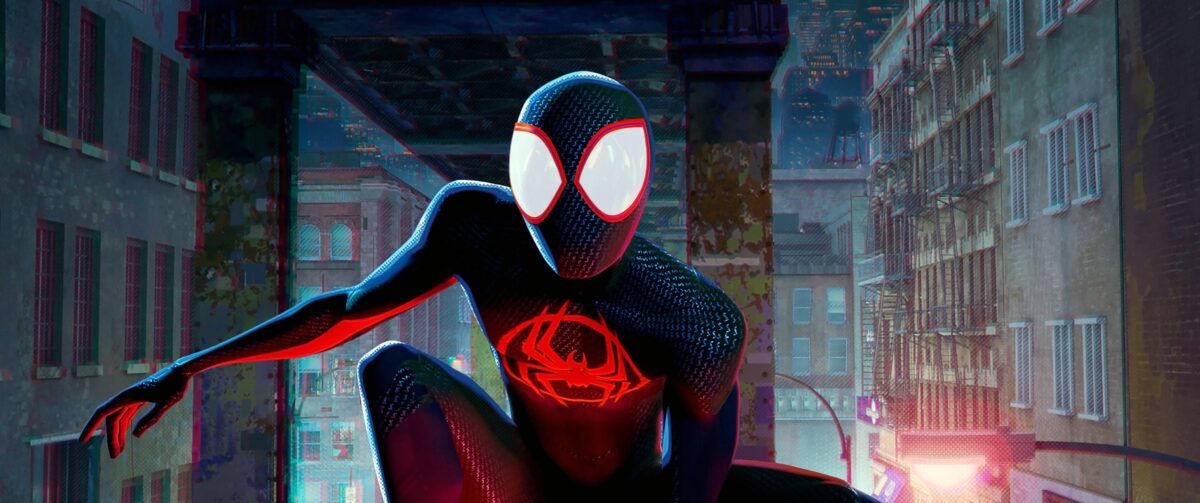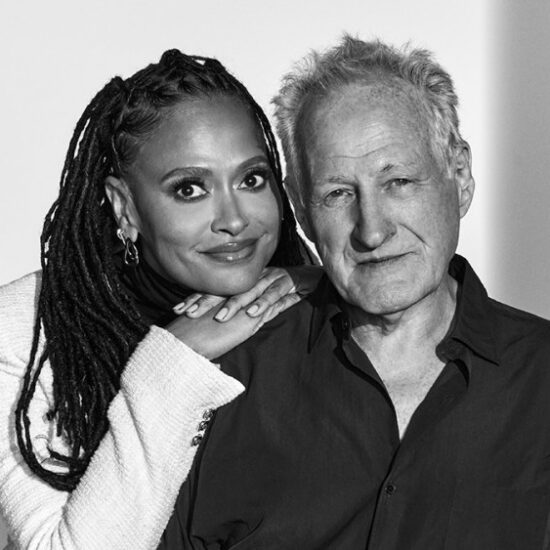
[Editor’s note: The following post contains spoilers.]
It’s not exaggerating by much to say that there have been as many versions of “Spider-Man: Across the Spider-Verse” as there are Spider-Men/Women/Dinosaurs in the film itself. The film went through at least 50 or 60 iterations, according to co-director Kemp Powers, to say nothing of the variations in theatrical cuts that made it into theaters. The work of an animation director, as you can see in the video above, is a massive lift. But a key choice for the film’s final section — spoilers, obviously — was to version Miles himself.
While Mahershala Ali returns to voice Uncle Aaron in Universe 42, the film doesn’t ask Shameik Moore to pull double voice-acting duty when Miles Morales is confronted by a version of himself who has embraced the mantle of The Prowler. Miles G. Morales is voiced by Jharrel Jerome, and the choice adds audible texture to the film’s cliffhanger ending.
“For years, we internally called him ‘Wiles,’” Powers told IndieWire of Miles G. Morales’ (behind-the-scenes) villain origin story. “It was really important that that character’s voice be incredibly distinct.” Some of the need for a distinct voice arises out of the process of voice acting for animation, where actors are often recording alone in a booth without seeing or even meeting their actual scene partner; different vocal qualities can do additional work and add layers to performance when character voices are finally connected to each other.
But in the case of Miles G. Morales, that isolation from Moore’s version of the character really helped highlight just how different “Wiles” is.
“He’s going to have a totally different perspective [so] he should have a different intonation; and if I’m being perfectly honest, I thought it would also be exciting to get an Afro-Latino actor,” Powers said. “We’ve joked about Miles’ grasp of Spanish and, among other things, to have [Miles G. Morales] just have the natural inflections where it’s obvious this is a person who knows how to speak that language. It’s a very subtle thing, but it really excited me.”
There is indeed an extra hit to the moment Jerome’s Prowler enunciates Morales differently from Brooklyn’s finest Spider-Man played by Moore, and the difference speaks to the life experience that has formed their identities in different ways and the potential clash in their worldviews. The viewer doesn’t just see but hears and feels a difference between Miles and Wiles, setting up yet one more universe Spider-Man is going to have to save.
“At least for me personally, what I’ve enjoyed and what I’ve leaned towards in terms of our casting choices — and you see it not just with Jharrell, you see it with Daniel Kaluuya [who plays Hobie] — is that we are interested in people’s natural speaking voices,” Powers said. “Historically, when you think of animation, you think of voice actors doing all different kinds of funny voices. But I’m drawn to dramatic and comedic actors’ natural voices in the process. And, again, it really excited me to have Jerome.”
Even without putting on an affectation, there’s still plenty of ways that Powers, alongside fellow co-directors Joaquim Dos Santos and Justin K. Thompson, can help construct vocal performances so they continue to serve the story as it evolves, version after version. “I would usually block out like two hours, usually in the morning, to shop takes before I went into edit or did something else,” Powers said of the process where directors listen to hundreds of takes in order to stitch together performances, sometimes taking only a phrase or a word from one take and kludging it onto pieces of others.
But Powers found that, at least for “Spider-Man: Across the Spider-Verse,” artificially constructing the best performance through editing wasn’t always the way to go, especially for key dramatic moments. If fans chafed at waiting so long for another entry in the series, Powers points out that the delay allowed actors to record in person instead of over Zoom. “When you’re in person more, and I’ve experienced this a lot on this film, you have a much better chance of getting full takes that are just straight performances. And I think that plays out a lot in what you see in the film,” Powers said.
Powers pointed to the moment where Miles’ mother, Rio (Luna Lauren Velez), tries to give him the support and guidance he needs before he goes off after Gwen (Hailee Steinfeld), which, among other things, formed the anchor of the first teaser trailer. “During COVID, it would’ve [taken] like 20 different takes to [create] that speech. But instead, [in the film] it was one. It was a single take that we used unbroken,” Powers said. “While you technically can’t hear the breaks when we kludge [takes] together, I do think you can tell [that moment is a single take] because you go on the emotional ride with the actor doing the performance, understanding that the vocal performance is only half of it. The other half is the performance of the animators.”

COVID restrictions are not, that willingness to commit to a single version of the performance is a strong choice for a kind of filmmaking that constantly morphs and changes just like edges and panel lines bleeding through the multiverse when Miles travels across Mumbattan and to the Spider-Society. But it’s also the correct one, providing a central throughline that allows the audience to connect to the characters.
“On animated films, especially one with so much action, the thing that people are the least excited about are the people in rooms talking. [But] the people in rooms talking were the bedrock of the entire film. They were some of the best moments that were connecting with the audience, and we built those performances with the time and care that someone would build an action sequence,” Powers said. “Every gesture, every blink, every shoulder shrug: We built those like they were Shakespearean plays.”
Sometimes the voice acting itself even got to work like a play. For maybe the biggest moment of emotional catharsis in the film, when Gwen finally confronts her father (Shea Whigham), ”we actually put Shea and Hailee together for that,” Powers said. “We did it separately, then to get even more emotion out of the scene, we put them together in a room to re-record it.”
Most of the work of that moment comes from the animated performance and the final, dramatic shift as Gwen’s world drains to white. The image is fraught with the terror of a blank canvas and the promise of a completely new start. But there’s also a tiny electrical current between the voices that can’t be engineered. “We want to tell an emotional, exciting story and blow people’s fucking wigs off at the end. And what’s wrong with trying to do that?” Power said.














